
Ahmad Shāh Durrānī, also known as Ahmad Shāh Abdālī, was the founder of the Durrani Empire and is often regarded as the founder of modern Afghanistan. In June 1747, he was appointed as King of the Afghans by a loya jirga in Kandahar, where he set up his capital.
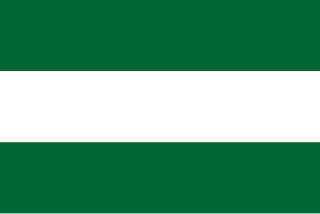
The Durrani Empire, or the Afghan Empire, also known as the Sadozai Kingdom, was an Afghan empire founded by the Durrani tribe of Pashtuns under Ahmad Shah Durrani in 1747, which spanned parts of Central Asia, the Iranian plateau, and the Indian subcontinent. At its peak, it ruled over present-day Afghanistan, much of Pakistan, parts of northeastern and southeastern Iran, eastern Turkmenistan, and northwestern India. Next to the Ottoman Empire, the Durrani Empire is considered to be among the most significant Islamic empires of the second half of the 18th century.
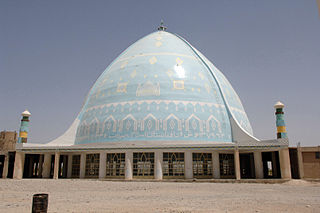
Kandahar is a city in Afghanistan, located in the south of the country on the Arghandab River, at an elevation of 1,010 m (3,310 ft). It is Afghanistan's second largest city after Kabul, with a population of about 614,118. It is the capital of Kandahar Province and the centre of the larger cultural region called Loy Kandahar.

George XI, known as Gurgin Khan in Iran, was a Georgian monarch (mepe) who ruled the Kingdom of Kartli as a Safavid Persian subject from 1676 to 1688 and again from 1703 to 1709. He is best known for his struggle against the Safavids which dominated his weakened kingdom and later as a Safavid commander-in-chief in what is now Afghanistan. Being an Eastern Orthodox Christian, he converted to Shia Islam prior to his appointment as governor of Kandahar.

The Ghiljī also spelled Khilji, Khalji, or Ghilzai and Ghilzay (غلزی), are one of the largest Pashtun tribes. Their traditional homeland is Ghazni and Qalati Ghilji in Afghanistan but they have also settled in other regions throughout the Afghanistan-Pakistan Pashtun belt. The modern nomadic Kochi people are predominantly made up of Ghilji tribes. The Ghilji make up around 20–25% of Afghanistan's total population.
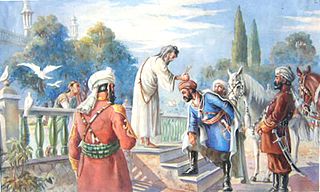
The Durrānī, formerly known as Abdālī (ابدالي), are one of the largest tribes of Pashtuns. Their traditional homeland is in southern Afghanistan, straddling into Toba Achakzai in Balochistan, Pakistan, but they are also settled in other parts of Afghanistan and parts of Khyber Pakhtunkhwa.

The Hotak dynasty also known as the Hotak Kingdom or the Hotak Afghanistan, was an Afghan monarchy founded by Ghilji Pashtuns that briefly ruled portions of Iran and Afghanistan during the 1720s. It was established in April 1709 by Mirwais Hotak, who led a successful rebellion against the declining Persian Safavid empire in the region of Loy Kandahar in what is now southern Afghanistan.

Mir Ways ibn Shah 'Alam, also known as Mirwais Khan Hotak was an Afghan ruler from the Ghilji tribe of Pashtuns of Kandahar, Afghanistan, and the short-lived founder of the Hotak dynasty.

Shāh Mahmūd Hotak,, or Shāh Mahmūd Ghiljī, also known by his epithet, The Conqueror, was the ruler of the Hotak dynasty who overthrew Safavid dynasty to become the king of Persia from 1722 until his death in 1725.
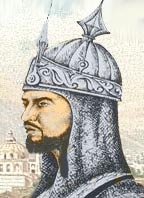
Shāh Ashraf Hotak,, also known as Shāh Ashraf Ghiljī, son of Abdul Aziz Hotak, was the fourth ruler of the Hotak dynasty. An Afghan from the Ghilji Pashtuns, he served as a commander in the army of Mahmud Hotak during his revolt against the heavily declining Safavid Persians. Ashraf also participated in the Battle of Gulnabad. In 1725, he briefly succeeded to the throne to become Shah of Persia after he killed his cousin Mahmud.
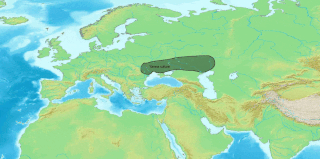
The Pashtun tribes, are tribes of the Pashtun people, a large Eastern Iranian ethnic group who speak the Pashto language and follow Pashtunwali, the social code of conduct for Pashtuns. They are found primarily in Afghanistan and Pakistan and form the world's largest tribal society, comprising over 60 million people and between 350 and 400 tribes and clans. They are traditionally divided into four tribal confederacies: the Sarbani (سړبني), the Bettani (بېټني), the Ghurghusht (غرغښت), the Karlani (کرلاڼي) and a few allied tribes of those that are Ismailkhel, Khel, Ludin, Sakzai, and Zai.
The Nasher are a noble Afghan family and Khans of the Pashtun Kharoti (Ghilji) tribe. The family is originally from Qarabagh, Ghazni but founded modern day Kunduz in the early 20th century and lived there until the end of the Barakzai dynasty in the late 20th century.

The name Afghānistān means "land of the Afghans", the name "Afghan" originally referred to a member of the Pashtuns. which originates from the ethnonym Afghan. Historically, Pashtuns were referred to as Afghans, the largest ethnic group of Afghanistan. The earliest reference to the name is found in the 10th-century geography book known as Hudud al-'Alam. The last part of the name, -stān is a Persian suffix for "place".

The Battle of Gulnabad was fought between the military forces from Hotaki Dynasty and the army of the Safavid Empire on Sunday, March 8, 1722. It further cemented the eventual fall of the Safavid dynasty, which had been declining for decades.
The Hotak or Hotaki (هوتکي) is a tribe of the Ghilji confederacy of the Pashtun people who live mainly in Afghanistan.
Shāh Abdul Azīz Hotak was the second ruler of the Ghilji Hotak dynasty of Kandahar, in what is today the state of Afghanistan. He was crowned in 1715 after the death of his brother, Mirwais Hotak. He was the father of Ashraf Hotak, the fourth ruler of the Hotak dynasty. Abdul Aziz was killed in 1717 by his nephew Mahmud Hotak. The tradition of parricide continued as Mahmud died at the hands of his cousin and Abdul Azīz's son Ashraf.

The Ottoman–Hotaki War of 1726–1727 was a conflict fought between the Ottoman Empire and the Hotak dynasty, over control of all western and northwestern parts of Iran.

Old Kandahar is a historical section of the city of Kandahar in southern Afghanistan.
The siege of Isfahan was a six-month-long siege of Isfahan, the capital of the Safavid dynasty of Iran, by the Hotaki-led Afghan army. It lasted from March to October 1722 and resulted in the city's fall and the beginning of the end of the Safavid dynasty.















